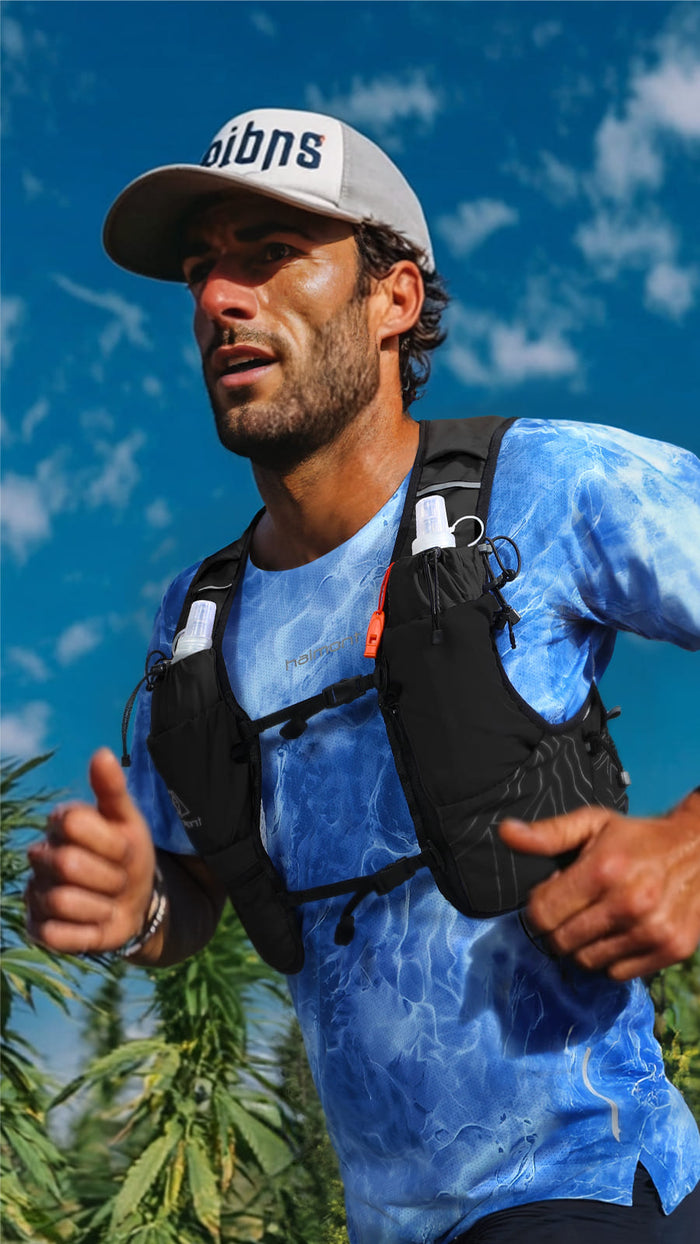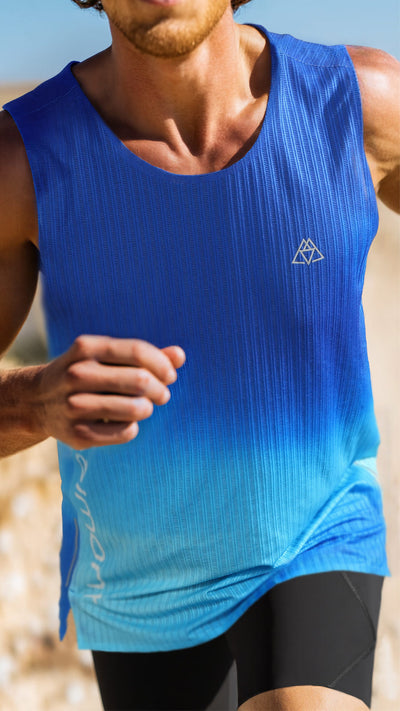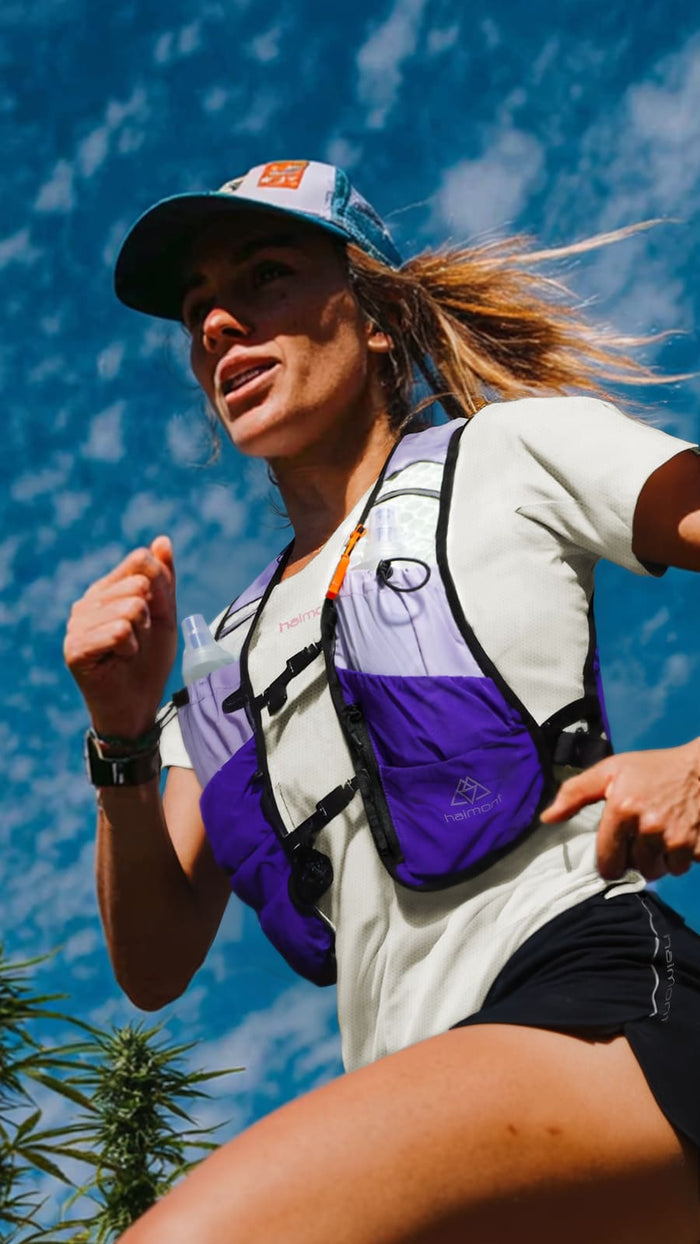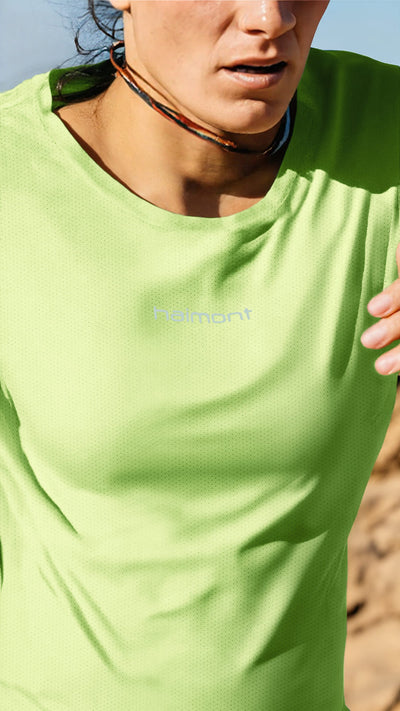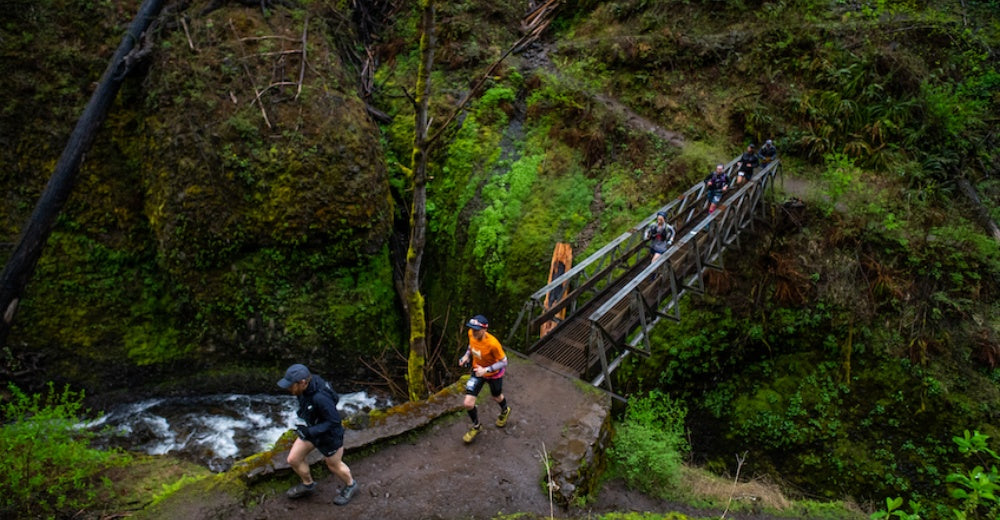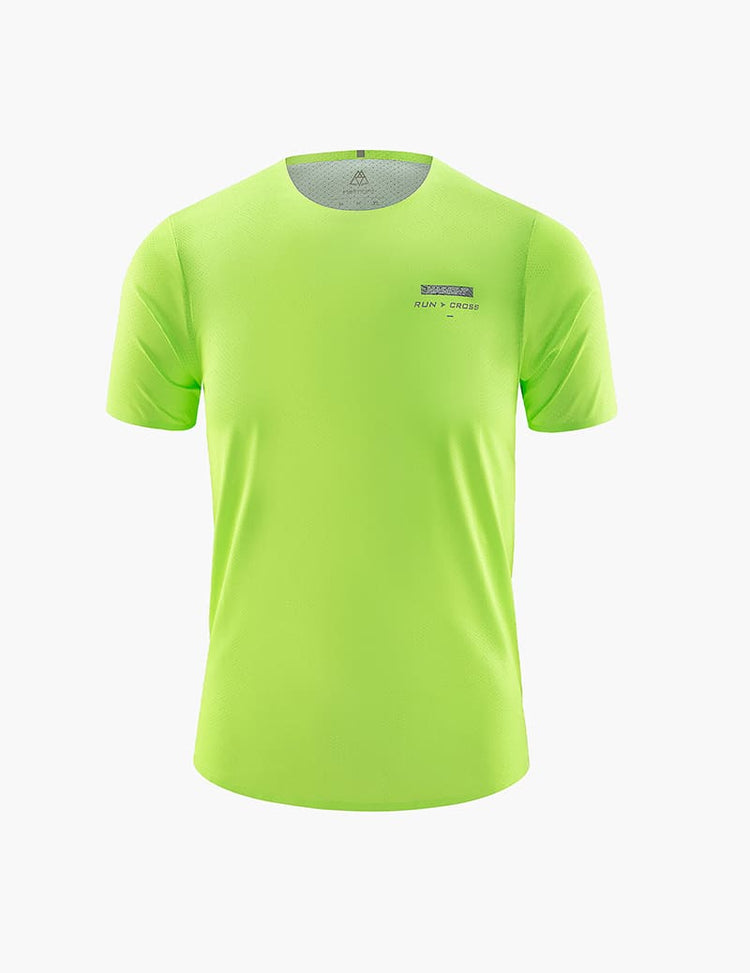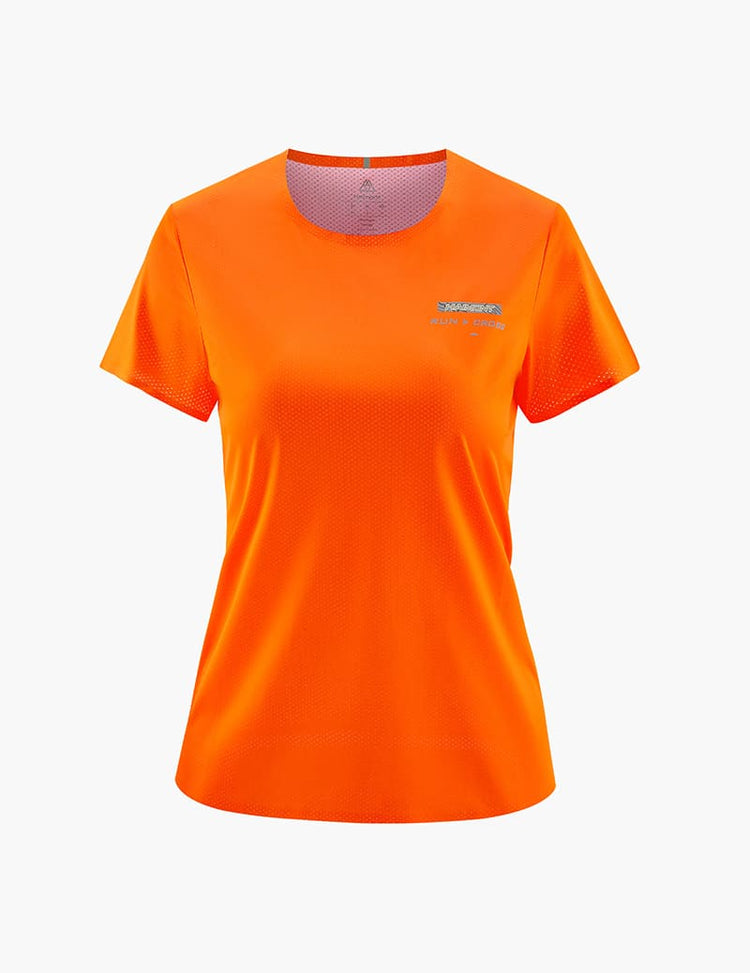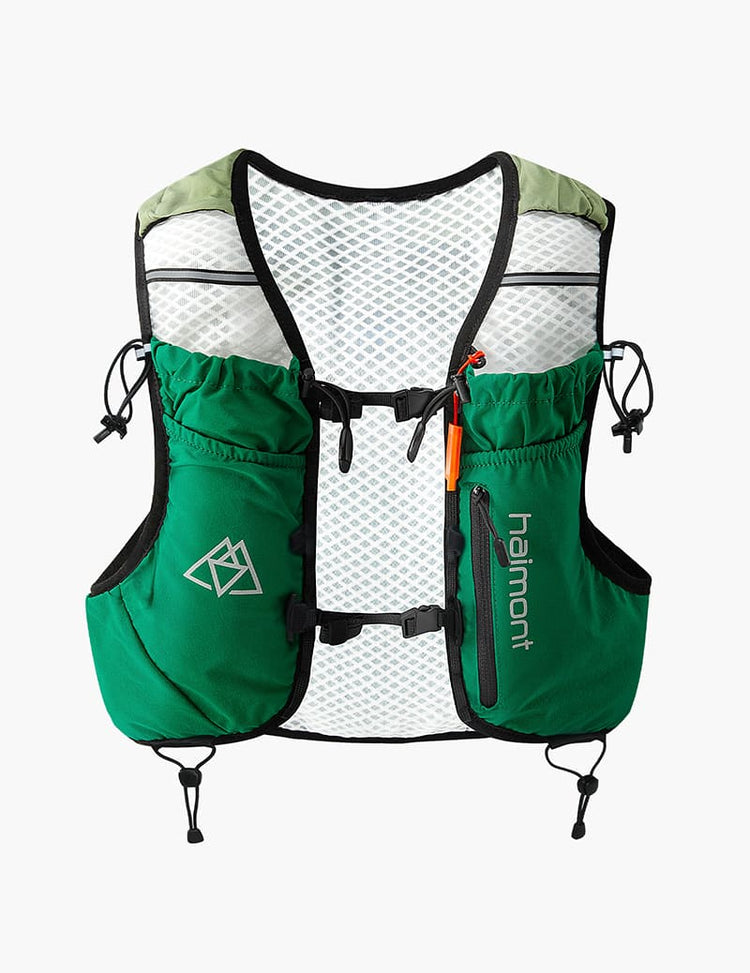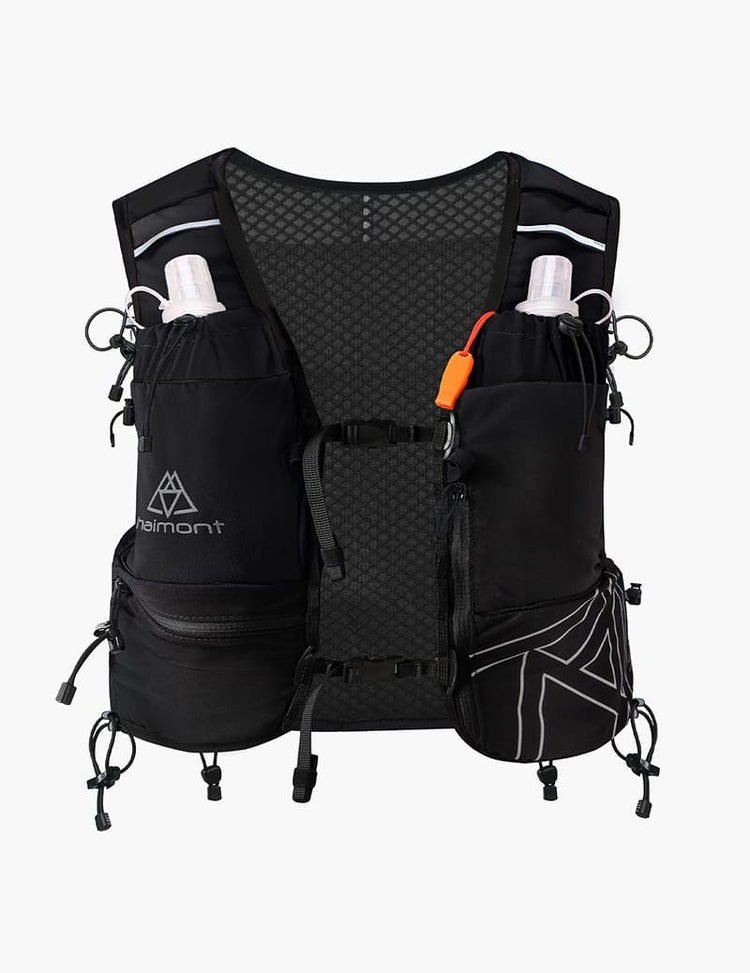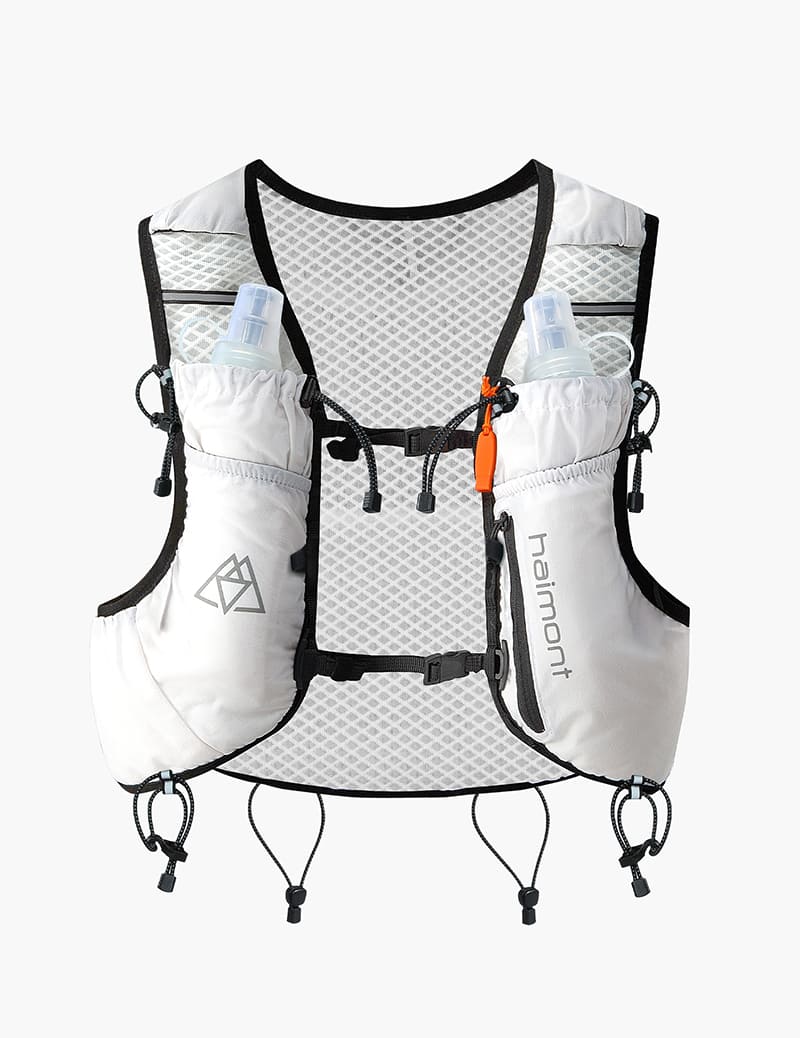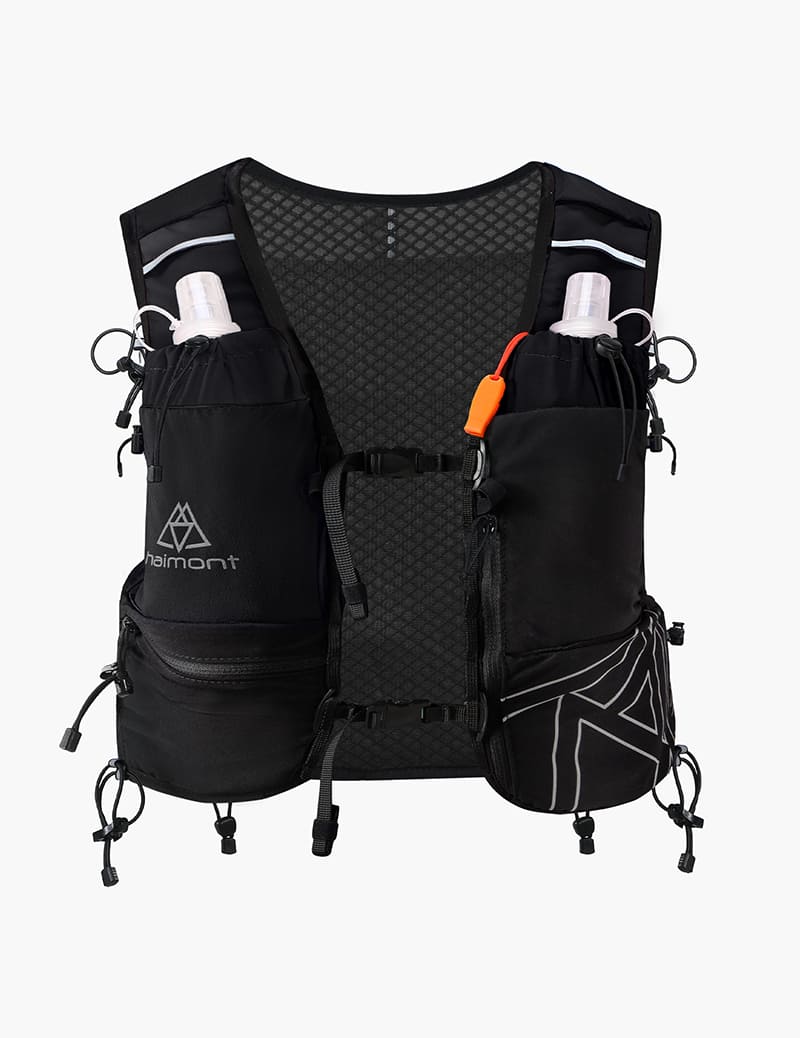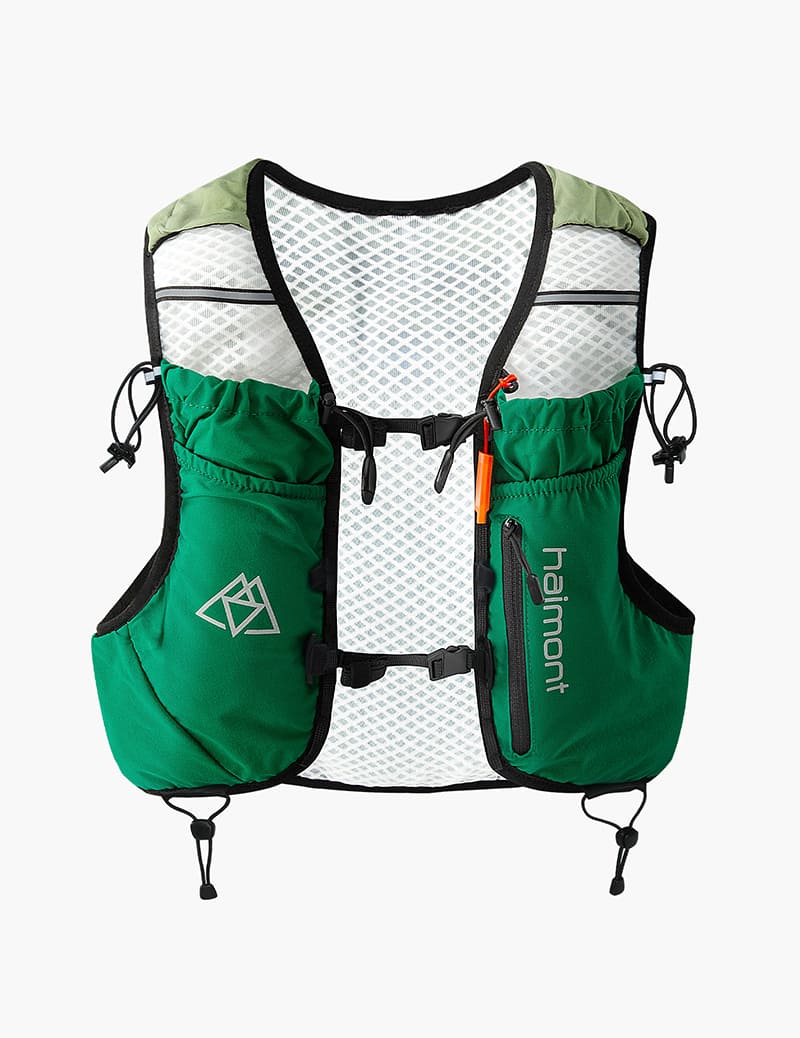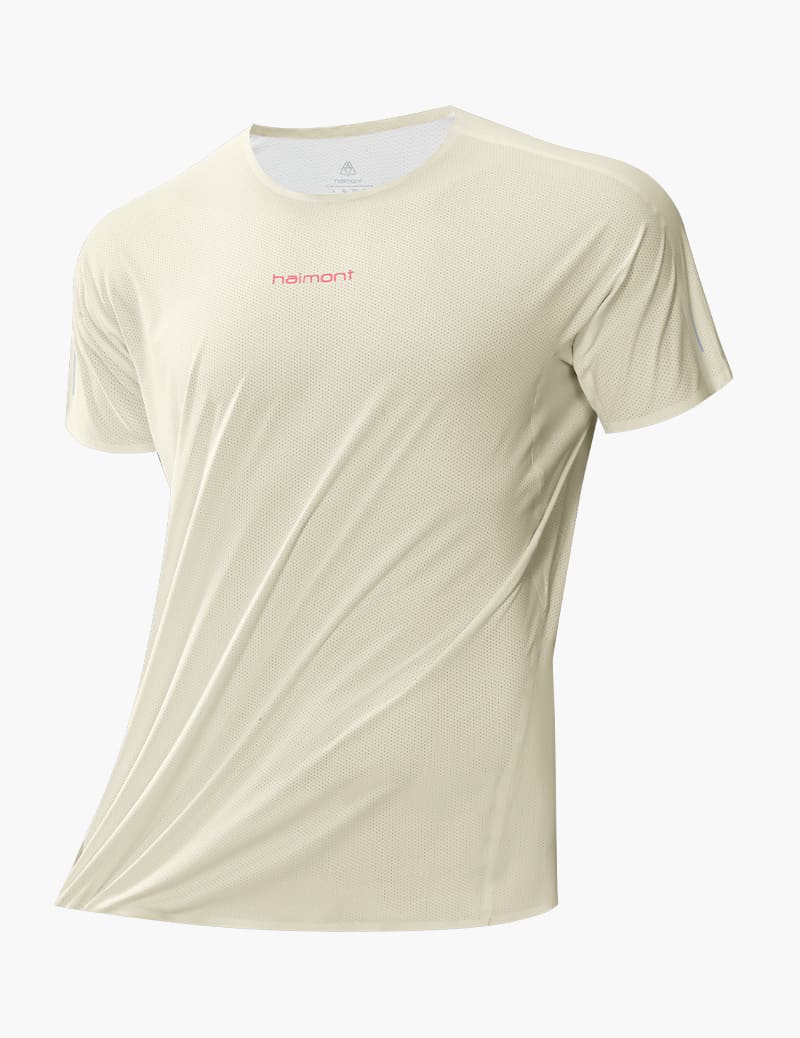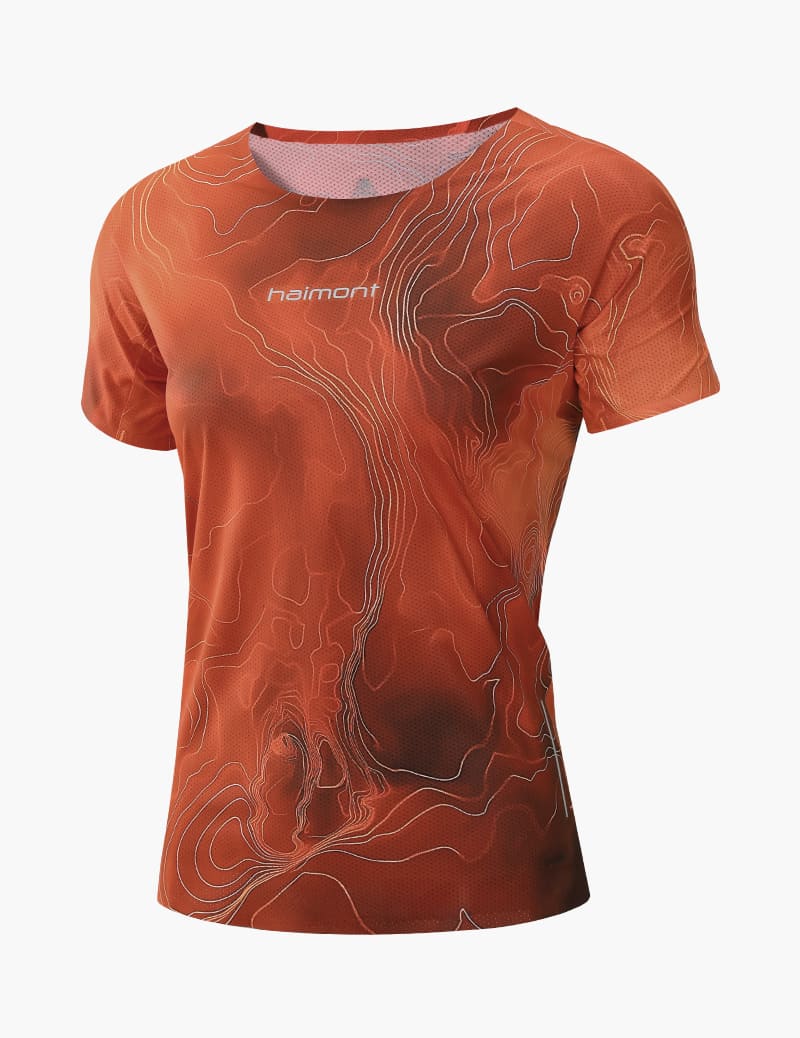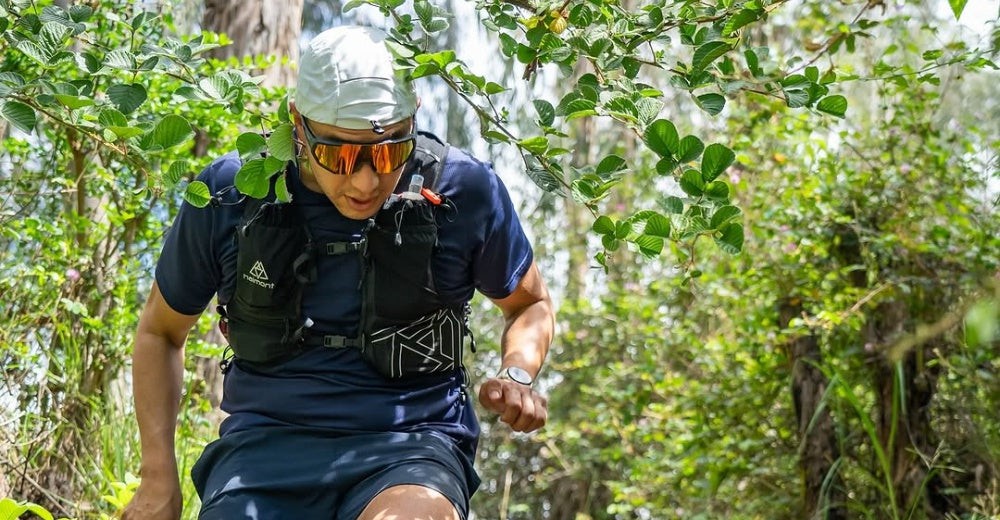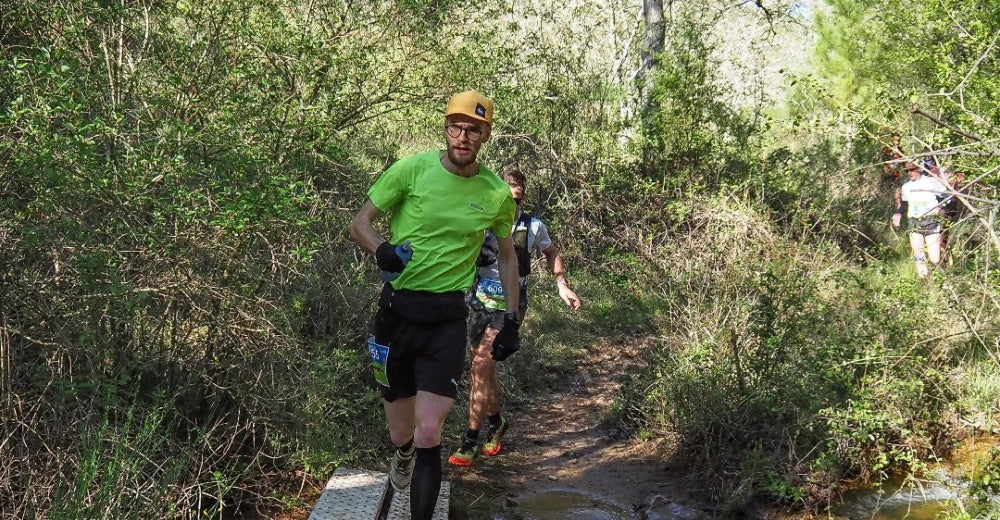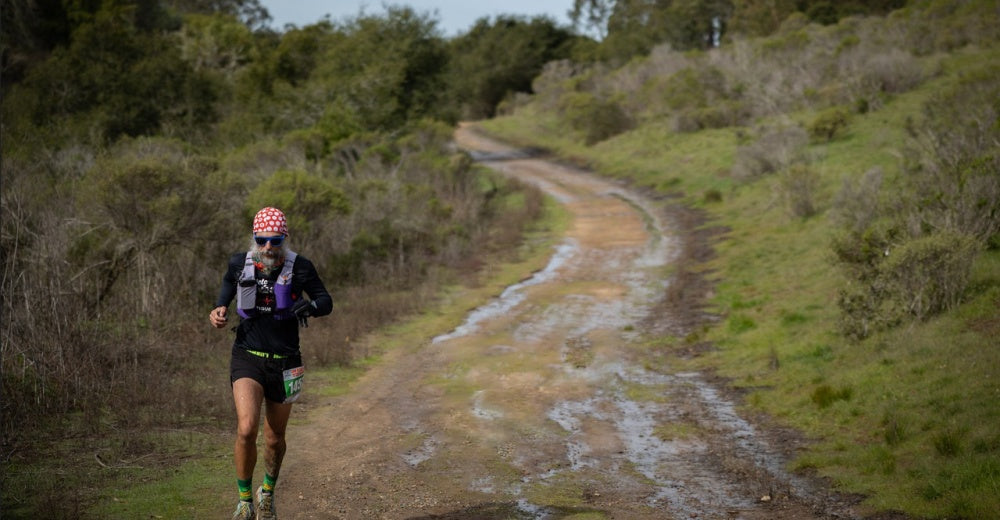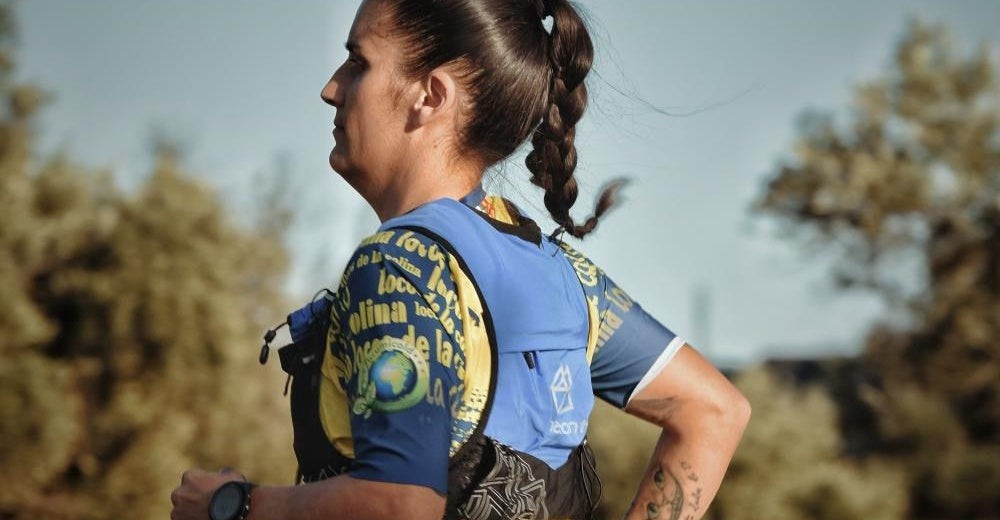Table of contents
Analysis of the race environment: mud, waterfalls, and the test of day and night
Gorge Waterfalls 100K is a classic spring 100-kilometer race in the North American cross-country circle. Its challenge comes not only from the distance and climbing, but also from the extreme environment of complex terrain and changeable climate. Many first-time participants underestimated the triple problem of "slippery + cold + long night running", resulting in hypothermia, sprained ankles, untimely supply, emotional collapse and other problems during the race. Therefore, before choosing equipment, you must fully understand the natural conditions of this race.

Topography: Canyons, waterfalls, dense forest trails
- Dirt road in the original forest: slippery fallen leaves, stagnant water, and tree roots are intertwined, which is a high-incidence area for sprains and falls.
- Gravel trails and cliff trails: narrow and unstable, with some sections only one person wide.
- Stream crossing points: shoes are bound to get wet, and blisters and foot hypothermia need to be prevented.
- Stairs and slickrock roads along the waterfall: misty, low visibility, and grip is extremely important.
- Technical climbing section: hands and feet are required, which tests core strength and backpack stability.
Terrain comment: This is not a "jogging and enjoying the scenery", but a technical trail running race with high concentration and high heart rate throughout the whole process.
Climate characteristics: rainy + large temperature difference between day and night
Gorge events are usually held in March and April every year, during the rainy spring season on the Pacific coast of the western United States, and the climate characteristics are very distinct:
|
Specific Values |
Practical Impact |
|
|
Average Temperature |
Daytime 10-16°C / Night 2-5°C |
Body temperature may drop easily at night |
|
Precipitation Rate |
High: 60–70% |
Likely to encounter continuous light rain or occasional showers |
|
Humidity |
Annual average Above 80% |
Sweat + rainwater evaporate slowly, increasing cold sensation in wet clothes |
|
Wind Force |
Strong in valleys / Cold at night |
Wind chill effect is significant, perceived temperature can be 3–5°C lower |
|
Daylight Duration |
Sunset around 19:30 |
Most participants must run in the dark for 3–6 hours |
Practical reminder: Rain brings not only "wetness", but also a series of chain reactions such as disordered body temperature regulation, wet shoes and socks, and faster energy consumption.
Difficulties in road conditions and rhythm management
The technical characteristics of the Gorge event are - "large ups and downs + difficult rhythm control + long supply intervals":
- The total climb exceeds 2,000 meters, but it is not concentrated, and the rhythm of "short climb-short descent-and then climb" is often disrupted.
- Each supply station is 12 to 20 kilometers apart, with the longest interval of 2.5 hours, which tests the carrying capacity and energy planning.
- The friction coefficient of the soles of the feet decreases during rainy days, and runners generally slow down their pace and are prone to psychological anxiety.
- Due to fatigue and limited vision during the night running stage, the cadence slows down, but the energy demand increases.
Rhythm suggestion: Gorge 100K is not a speed competition, but an endurance competition of "controlling rhythm and steady advancement".
Feedback from participants
The following are descriptions of the environment by several real participants (interview records of the Class of 2023):
- "At about 50 kilometers, my feet were almost completely wet and my socks were soaked white, but the supply point was too far away to change."
- "Climbing that rocky slope at 3 a.m., the light couldn't reach far, and I felt that every step was a test of life and death."
- "I thought I could withstand it wearing a waterproof jacket, but it turned out to be wet inside and outside. I suffered a great loss for not choosing a quick-drying T-shirt."
The environment determines the strategy, and the strategy determines the equipment
Gorge Waterfalls is not only a 100-kilometer distance challenge, but also a systematic survival test. If you want to finish the race, be safe, and feel comfortable, you must understand the "temperament" of this mountain forest:
- Large temperature difference → Temperature control equipment must be flexibly layered.
- Heavy humidity → All underwear must dry quickly and drain moisture.
- Slippery road conditions → Shoe and foot protection is the bottom line for finishing the race.
- Long night section → Night running equipment is not optional, but a lifeline.
- Long supply interval → Backpack carrying strategy determines the rhythm of the race.

Detailed explanation of upper body equipment: Why quick-drying T is your "core temperature control layer"
Many off-road novices think of fleece and waterproof jackets when they mention "temperature control", but in fact, the most important temperature control link comes from the closest layer - quick-drying T-shirts. This is not an ordinary T-shirt, but a "core temperature control layer" that connects the entire system. In the wet and cold + long-lasting combat environment of Gorge Waterfalls, performance is crucial.
What is the "core temperature control layer"?
In trail running, we often talk about the "three-layer method of dressing": the close-fitting layer (quick-drying), the middle layer (warmth), and the outer layer (windproof and waterproof). These three layers work together to regulate your body temperature.
The close-fitting quick-drying layer has three main functions:
- Rapid perspiration to prevent internal moisture.
- Maintain a dry feeling on the body surface to avoid wind chill effects.
- Reduce friction with the skin to avoid abrasions or redness after sweating.
Key cognition: In a wet and cold environment, a "wet T-shirt" is more deadly than you think. It is not only cold, but also makes you quickly consume energy for heat production, which in turn affects your heart rate and supply plan.
Dressing traps in Gorge events: wet + cold + wind = a triple kill combination
Take the Gorge Waterfalls as an example. This event has several "extreme test scenes" for upper-body clothing:

Why choose a quick-drying T-shirt instead of a cotton T-shirt or a regular sweatshirt?

Practical summary: Not every sports T-shirt can "survive" a 100-kilometer trail run. A truly qualified quick-drying T-shirt is your "closest comrade-in-arms" who can help you get to the finish line.
Haimont Ultralight Trail Running Top
A temperature-controlling core layer made for the mountains
- Lightweight, breathable, anti-static and quick-drying fabric.
- Seamless design to prevent friction.
- Reflective logo to help improve visibility when running in low-light conditions.
- Seamless shoulder design for maximum comfort and compatible with running vest packs.
Recommended pairing:
- Daytime → Quick-drying T + ultralight windbreaker.
- Evening/night → Quick-drying T + thin fleece or medium insulation + waterproof shell.
Real feedback: Choosing the right T-shirt is equivalent to saving a box of energy gel
"I used Haimont Ultralight Trail Running quick-drying T-shirt. I only changed clothes once in 17 hours. It was significantly more breathable than the brand I wore before. The mountain wind was very cold in the middle of the night, but the T-shirt was not wet and cold next to my body, and I was very comfortable running in the latter part."
-Sara, 2024 Gorge finisher M. "I didn't choose a quick-drying T-shirt, so I was soaked with sweat after less than 20 kilometers. Later, adding a warm layer didn't help. I felt like I was sticking to a wet towel overnight, and I got colder and colder as I ran."
——Mike L., who withdrew from the 2023 race
Detailed explanation of night running equipment: What can you rely on to "see the finish line" in the dark
In trail running races, night running is the "watershed" of the entire race experience - it will magnify your fatigue, expose your equipment shortcomings, and test your willpower. In events like Gorge Waterfalls 100K, more than 80% of the finishers have to experience 3 to 6 hours of night running, which means:
If you are not prepared for night running, it is not "cannot reach the finish line", but "cannot see the finish line".
Night running is not as simple as turning on the lights, it tests:
- Vision system: Can you clearly see the road conditions ahead?
- Warming system: Will the cold wind of 2 to 5℃ in the middle of the night take away your body temperature?
- Emotional stability system: What do you rely on to avoid collapse during the period of loneliness, fatigue, and fear?
Headlight: It is not about light, but "light to see the path clearly"
In trail night running, the headlight is not a "flashlight", but an "extension of the eyes" of your brain. Choosing the wrong headlight means that "the vision can't keep up with the pace" - this will directly lead to falls, wrong roads, panic, and tree collisions.
Gorge night running lighting needs:

Keep warm at night: Don't freeze your willpower in the middle of the night
The temperature at night will quickly drop below 5℃, and your body is at its lowest point in terms of heat (glycogen is almost exhausted, the desire to eat decreases, and the mental focus is loose). At this time, warm equipment = emotional defense line.
Recommended configuration:
- Medium-weight warm layer (such as light wool or thin fleece).
- Lightweight windproof shell (can withstand cold wind/moisture).
- Touch screen warm gloves (control device + insulation).
- Fleece hat or Buff (covers ears and back of neck, windproof is the most important).
Tips: It is easy to get stiff hands and feet on wet and cold nights. Remember not to choose gloves that are too thick to avoid affecting the supply operation.
Psychological equipment: When you are alone around...
When running at night, in addition to physical equipment, the more important thing is "emotional coping". Imagine:
- There are only 10 meters ahead that can be illuminated by the headlight.
- Fog rises, and there are only shadows in the distance.
- Occasional rustling sounds in the woods.
- There is no one around.
- Every step you take is a fight against giving up.
You need to be prepared:
- "Ritual actions" that can keep you on pace (such as drinking water every 5 minutes, eating a candy);
- Encouraging voice, music or friend recordings stored in your phone or watch in advance;
- "Psychological anchor points" when you know how much distance you have left: 30KM → 3 more energy gels; 20KM → a training match; 10KM → a familiar route home.
If conditions permit, you can play music with bone conduction headphones, and you might as well set up a dedicated "night battle song".
Sharing of real runners' night running clips
"I was running on a gravel slope at 2 a.m., and my left foot just slipped. I almost collapsed. Fortunately, my light could shine far, and I saw a puddle below, so I stopped." - Allen, a 2023 finisher
"I wore ordinary cotton gloves during the night, but they were cold when they got wet, so I didn't want to take them off at the supply station. I regretted not bringing windproof gloves."
- Megan, a 2022 runner who withdrew from the race
If you want to finish the race, you have to survive the night. If you want to survive the night, you have to see your feet clearly, keep your whole body warm, and stabilize your heart. And all of this depends on choosing the right equipment in advance, simulating the rhythm of night running, and having enough understanding and prediction of yourself. What really makes the difference between finishing and retiring is not the pace, but whether you can take the next step at 2 a.m.

Detailed explanation of foot equipment: Every step you take depends on it to grip the ground
You can survive the low temperature with your willpower and cross the night with lights, but you can't "step on" a slippery rock with your willpower. The 100km terrain of Gorge Waterfalls determines a cruel fact:
Wearing the wrong shoes will prevent you from running even a third of the way; choosing the wrong socks will cause blisters that will ruin the second half of the way.
Trail running is not just about “wearing the right shoes”, but also about:
- Does the sole of your shoe “bite” the ground firmly with every step you take?
- Does your foot slip in your shoe every time you climb a wet rock slope?
- After running 40km, do your feet start to feel numb and painful due to the heat and friction?

Trail running shoes: A pair of shoes that can "bite" mud is your best partner
The core functions of trail running shoes are "grip + support + drainage". Ordinary running shoes may be able to cope with dry forest roads, but when you get to the slippery mud slopes of Gorge, you will immediately know what "greasy soles" mean.
Key parameters for shoe selection (applicable to Gorge 100K):

Warm suggestions:
- Be sure to wear the shoes for more than 30 kilometers before the race to run in the shoe last and the shoelace pressure points.
- If possible, bring a second pair of spare shoes and place them at the midway supply point to prevent water ingress or serious foot soaking.
Trail running socks: The "second layer of skin" that is more important than you think
Many people ignore socks, and as a result, they get blisters directly after running 50 kilometers, and even their nails bruise and fall off. It is not a "shoe problem" at all, but the wrong socks.
Key elements of sock selection:

Special tips:
- It is not recommended to wear "boat socks" or "low-top cotton socks".
- It is not recommended to wear "first-time" socks on the race.
- It is recommended to bring an extra pair of socks (it is important to change wet socks during the race to restore dryness).
Feedback from runners
"There are too many wet sections in Gorge, and I couldn't walk without grip. I changed into special trail running shoes and realized that my previous shoes were like "skating." —— Eli, a 2024 finisher
"I almost lost my feeling in the latter part of the race, and later I found that the heels of my socks had wrinkles and were worn out. The lesson is: socks are as important as shoes." —— Lena, a non-finisher in 2023
Gorge 100 kilometers is not about who runs faster, but who can "step firmly on the mountain" when you are most tired. A pair of well-fitting trail running shoes + a pair of functional socks are the only equipment that always touches the ground during the race, and they determine whether you can "get to the end." The runner's will is in his chest, but the confidence to finish the race depends on the equipment under his feet.
Backpack and carrying strategy: How to carry these 100 kilometers
Gorge Waterfalls 100K's supply stations are reasonably distributed, but it still requires runners to have "self-supply capabilities". Especially in the middle of the night, when it is wet and cold, and when physical strength is declining, a good off-road backpack is not just a storage bag, but a key tool for whether you can persist to the end.
Three core principles for choosing a vest pack

Gorge Waterfalls Recharge Paragraph Analysis:

Haimont UltraLight Pro 8L pro trail running vest pack
Lightweight, fit, and multifunctional - "live up to every step"
- Weighing only 183g, extremely lightweight: no extra burden for the entire race.
- 8L golden capacity: can carry enough warmth, rain protection, and food without being bloated.
- Professional trail fitting structure: high elastic shoulder strap + back sticker + waist stabilization system.
- Front dual soft water bottle compartment: ready to use, supports Haimont soft water bottles or mainstream brands.
- Zipper + elastic compartment system: can place energy gels, salt pills, gloves, headlamp batteries and other functional areas, and can be taken blindly at night.
- Special trekking pole fixing belt + external elastic rope net: convenient for temporary external windbreaker and supply bag.
- Night running reflective strip design: improve visibility and safety at night.
Feedback from multiple Gorge finishers
"The front zipper pocket of the Haimont 8L Pro vest pack is just enough to hold all my gels and salt pills, and it doesn't shake when going downhill, so it's very convenient to replenish at night."
--Jared, a 2023 finisher
Detailed explanation of what to carry (taking Haimont UltraLight Pro 8L as an example)
In order to make you run lightly, steadily and calmly, the Haimont 8L trail running vest pack is designed to be "small but exquisite" in terms of capacity, which is suitable for the core supply needs of 100km events + mandatory equipment carrying + independent warmth/lighting system.
Chest area (quick access area)
These are the core supplies you can take while running and use without stopping:

Side waist elastic pocket/mesh pocket (semi-quick access area)
Suitable for storing small items that need to be taken out at any time:

Main compartment (protection + replacement + safety core)
The main compartment is the "ballast stone" of the backpack, mainly for storing items that are slightly larger in size and need to be kept as spares but not always available.
|
Equipment |
Essential/ Recommended |
Description |
|
Lightweight Windproof & Water-Resistant Jacket/Raincoat |
Essential |
Low temperatures and slippery conditions in the Gorge Waterfalls section; helps prevent hypothermia. |
|
Emergency Blanket (Mandatory Gear) |
Essential |
Used for warmth in case of cramps, getting lost, or hypothermia. |
|
Whistle (Mandatory Gear) |
Essential |
For signaling distress; typically built into Haimont backpacks. |
|
Warm Hat/Fleece Headgear |
Essential |
Large temperature difference during night sections, crucial for warmth and survival. |
|
Multi-functional Buff |
Recommended |
Versatile: sweat towel, neck protection, face mask, or forehead band. |
|
Light Gloves (1 pair) |
Recommended |
Protects fingers from mountain winds and damp cold, especially at night. |
|
Electrolyte Effervescent Tablets (Spare) |
Recommended |
1–2 tablets to help with dehydration during long, hot sections. |
|
Compressed Energy Foods (e.g., Nuts, Energy Bars) |
Recommended |
A substitute when you can’t consume gels during the later stages. |
|
Paper Map/Aid Station List (Waterproof) |
Recommended |
Backup in case phone loses signal or you can’t access navigation. |
|
Small Emergency Kit |
Recommended |
Includes 1-2 muscle patches, band-aids, pain relief cream, alcohol pads, etc. |
External hanging area (elastic rope net/external straps)
This is to solve the problem of "temporary removal/hanging of items" and avoid you opening the main compartment for a windbreaker.

Energy supply system in trail running
Gorge Waterfalls Although the supply stations are reasonably set up, the complex weather and terrain mean that you cannot completely rely on the race organizers. You must have a certain degree of self-supply ability and scientific intake strategy. Proper supply not only determines whether you have the strength to cross the finish line, but also whether you will have "non-technical withdrawals" such as hypoglycemia, cramps, bloating, dehydration, etc.
Overview of energy requirements for 100km trail running
In a 100K trail run, the body will experience:

Replenishment rhythm recommendation: use "time" as the unit, not "eat when hungry"
Rule of thumb: replenish energy every 30 to 45 minutes, and consume 200-300 calories per hour.
Recommended replenishment rhythm:

Notes:
- Don’t wait until you are hungry to eat: that is a low blood sugar alarm.
- Start supplementing early: eat at 0km, not 30km.
- Don’t rely on a single flavor or brand: changing flavors can stimulate appetite and avoid “taste fatigue”.
- Adjust the rhythm of caffeine intake in time: caffeinated gel is not recommended in the first half, and can be introduced moderately at night.
Electrolyte strategy: not only drinking water, but also “drinking right”
Sweating a lot + low temperature environment = easy to ignore electrolyte loss, which leads to cramps, low sodium, and unstable heart rate.
Supply suggestions:

Supply "Error" Scenarios and Responses


The Zion Ultra track reveals the underlying logic of trail running: every gram of equipment is fighting against gravity. From heat acclimatization training to water equipment selection, from sandy cadence adjustment to post-race cold therapy, every decision must be based on scientific data. The real value of lightweight trail running equipment is not just "light" but allows runners to focus more on the dialogue between terrain, weather, rhythm, and body in every kilometer - that is the true art of extreme trail.
This is why more and more runners choose Haimont's lightweight equipment system when facing hardcore tracks such as Zion, UTMB, or the Gorge. Whether it is a quick-drying T-shirt, a trail running vest pack, or a night running equipment combination, each Haimont product is designed with the principle of "less but powerful", removing redundancy, optimizing structure, and strengthening actual performance, just for you to run more steadily, farther, and more freely on every mountain road.


